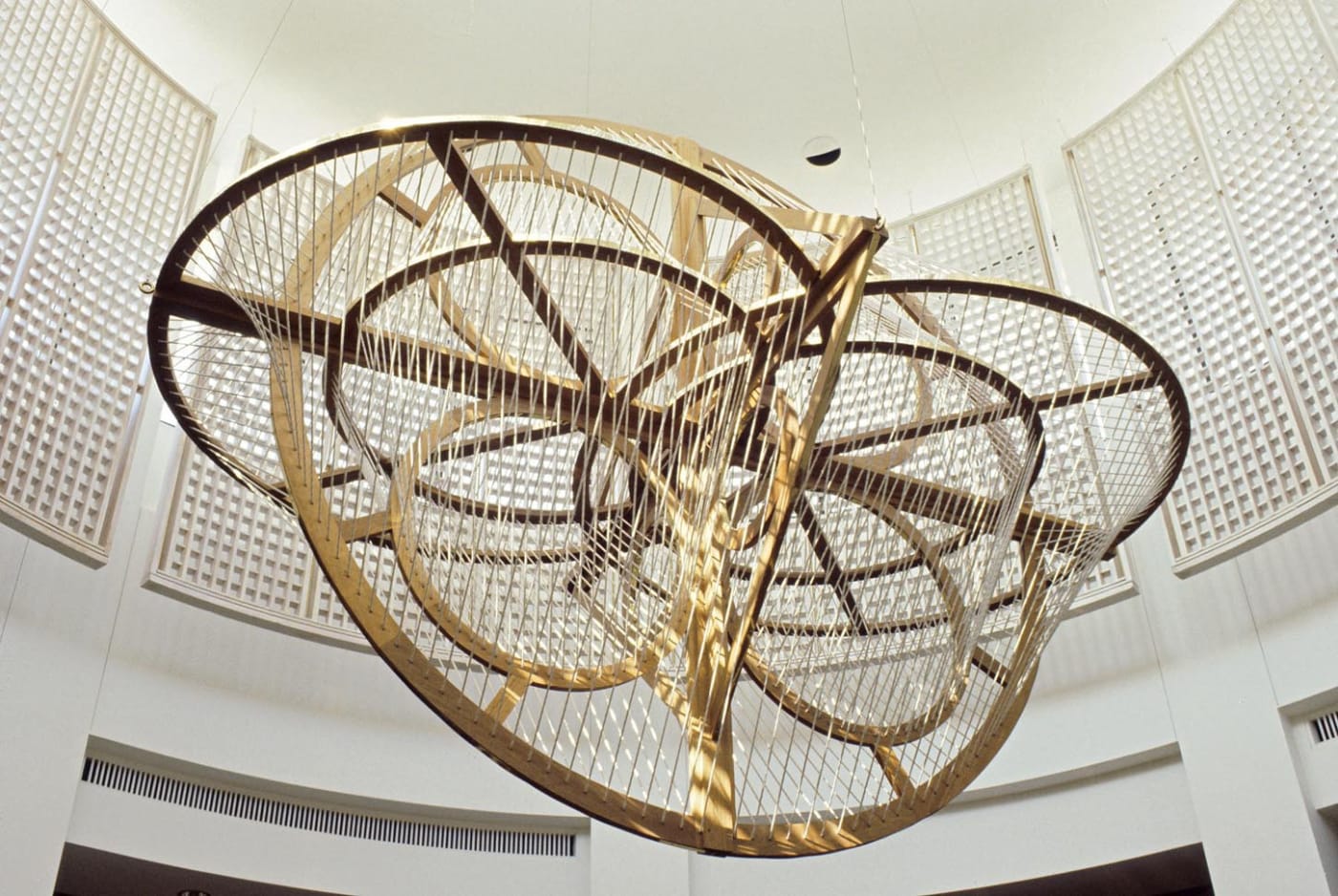Sue Fuller (b. 1914, Pittsburgh, Pennsylvania – d. 2006, Southampton, New York) was an American artist known for her pioneering string compositions—three-dimensional thread constructions suspended within transparent lucite frames. Her work, produced between the 1940s and 1980s, occupies a unique position at the intersection of abstraction, material innovation, and textile-based spatial design.
Fuller studied at the Carnegie Institute of Technology, Columbia University Teachers College, and the Art Students League in New York. She was closely associated with two key centres of postwar experimentation: Atelier 17, where she worked under Stanley William Hayter, and Black Mountain College, where she studied with Josef Albers. These influences informed her exploration of line, geometry, and structural tension, culminating in her signature thread constructions from the early 1950s onward.
Fuller’s work was exhibited in major institutional surveys during her lifetime, including Abstract Painting and Sculpture in America (The Museum of Modern Art, 1951) and The Responsive Eye (MoMA, 1965). She was among the earliest women artists to enter MoMA’s permanent collection (1949), and her work is now held in numerous public collections, including the Whitney Museum of American Art, Metropolitan Museum of Art, Solomon R. Guggenheim Museum, Tate, London, Smithsonian American Art Museum, Art Institute of Chicago, Library of Congress, and Fogg Museum at Harvard University.
Long overlooked within dominant narratives of postwar modernism, Fuller’s legacy is now recognised for its radical integration of traditional craft with formalist abstraction and its prescient engagement with ideas of perception, transparency, and the spatial dynamics of line.
 "/>
"/>

